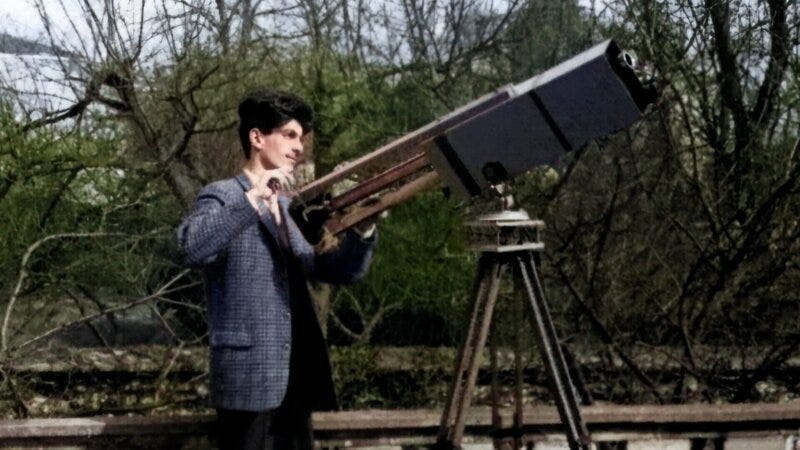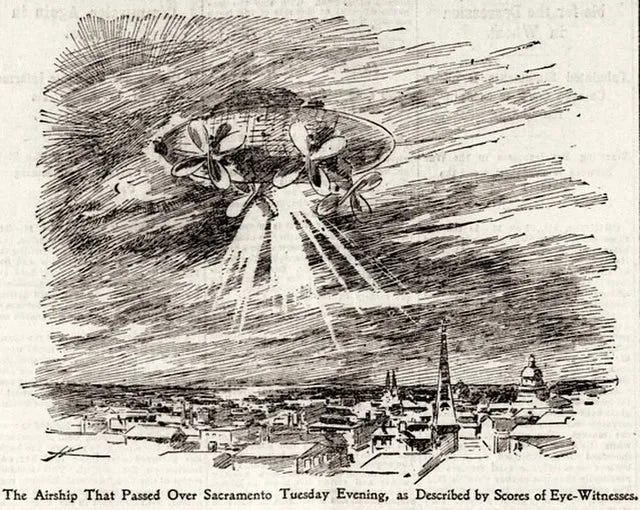Jacques Vallée: Information Scientist
Applying Data, Analysis and History to Ufology
First among the eminent scientists to study the UFO phenomenon is Jacques Vallée. He received his Bachelor’s in mathematics from the Sorbonne, a Masters in astrophysics from Lille University, and his doctorate in information science from Northwestern University. There, from the campus in Evanston, Illinois, he assisted Dr. J. Allen Hynek and the work of Project BLUE BOOK.
In his work, Dr. Vallée transformed thousands of UFO reports to the US Air Force into data to reveal patterns about the phenomenon and its impacts on witnesses and society. He has applied logic, science and dialectic to separate “the signal from the noise.” His analyses of the phenomenon and its historical impact on humanity have created the foundation for the science of Ufology.
Dr. Vallée writes:
“I don’t think there is such a thing as “the flying saucer phenomenon.” I think it has three components and we have to deal with them in different ways.
First, there is a physical object. That may be a flying saucer or it may be a projection or it may be something entirely different. All we know about it is that it represents a tremendous quantity of electromagnetic energy in a small volume. I say that based upon the evidence gathered from traces, from electromagnetic and radar detection and from perturbations of the electromagnetic fields such as Dr. Claude Poher, the French space scientist, has recorded.
Second, there’s the phenomenon the witnesses perceive. What they tell us is that they’ve seen a flying saucer. Now they may have seen that or they may have seen an image of a flying saucer or they may have hallucinated it under the influence of microwave radiation, or any of a number of things may have happened. The fact is that the witnesses were exposed to an event and as a result they experienced a highly complex alteration of perception which caused them to describe the object or objects that figure in their testimony.
Beyond those — the physical phenomenon and the perception phenomenon — we have the third component, the social phenomenon. That’s what happens when the reports are submitted to society and enter the cultural arena. That’s the part which I find most interesting."
SOURCE: “Jacques Vallee’s Integral Approach to UFO Phenomena.”
One Who Looks to the Stars
A maxim attributed to Plato reads: “Astronomy compels the soul to look upwards and leads us from this world to another.” I believe that compunction began early for Dr. Vallée and people interested in astronomy, UAP and life on other worlds.
The UFO wave of 1954 in France and Italy sparked the young Jacques Vallée’s interest in the UFO phenomenon. Then age 14, he closely followed the news of the day and kept a scrapbook filled with articles and images clipped from newspapers and magazines.
In the following spring of 1955, Vallée and his mother observed a metallic-looking, disc-shaped object hovering above their town’s church. From their home’s yard, about a quarter-mile away, the object appeared to sport a transparent dome. The next day, a friend at school confided he, too, had seen the same object hovering above the church, including the dome.
Science, Understanding and Work
Thankfully, Dr. Vallée also is a gifted writer and communicator. He has written more than a dozen books and personal journals, and a number of groundbreaking peer-reviewed articles on the science of UFOs. His works include “Anatomy of a Phenomenon: UFOs in Space,” “Challenge to Science: The UFO Enigma” (with his wife, Janine), “Passport to Magonia,” “The Invisible College,” “UFO Chronicles of the Soviet Union: A Cosmic Samizdat,” “The Edge of Reality” (with Dr. Hynek), “Messengers of Deception,” and a good many more outstanding works, including a trilogy of personal investigations and groundbreaking analyses: “Dimensions,” “Confrontations,” and “Revelations.” His research papers (48-linear feet) are preserved in the “Archives of the Impossible” at Rice University in Houston, Texas.
According to (Rice University) scholar of religion Jeffrey J. Kripal, Vallée “makes the impossible possible through the sophistication of his suspicions,” using his “comparative imagination” to see new patterns in the data. He is thus, as Kripal described him in a 2010 book of four biographical essays, “an author of the impossible.” Such figures have long fascinated Kripal, and though in his modesty he’d likely deny it, he may be one himself: Kripal launched his career using Tantra and psychoanalysis to resituate texts around the Hindu saint Ramakrishna. He went on to study mysticism and eroticism in a variety of faiths, as well as to challenge the boundaries of scientific and humanistic research with The Flip and The Superhumanties.
Click here to follow Dr. Kripal and Dr. Vallée as they discuss UFOs, the nature of reality, humanity’s place in the cosmos and the limits to knowledge.
History: Key for Understanding UAP
“Passport to Magonia: From Folklore to Flying Saucers” documents the history of UFOs as a phenomenon that manifests throughout recorded history. In addition to context or perspective, Dr. Vallée’s study helps us understand how humanity could go from flying kites to walking on the moon in just one lifetime.
A review on LibraryThing.com sheds light on Dr. Vallée’s contributions to the understanding of the UFO phenomenon in its historical context. The implications may be as old as humanity:
It is readily acknowledged that our time has surpassed all epochs in history for the accumulation of technical knowledge, physical power over our environment, and economic might.
It is less often pointed out, however, that our age has generated, and continues to generate, mythical material almost unparalleled in quantity and quality in the rich records of human imagination. More precisely, people have very frequently reported the observation of wonderful aerial objects, variously designated as flying saucers, unidentified flying objects (UFOs), and so on; among these narratives descriptions of landings made by these craft are commonplace; and that quite a few accounts purport to inform us of the physical characteristics, the psychological behaviour, and the motivation of their occupants.
But investigators have neglected to recognize one important perspective of the phenomenon: the fact that beliefs identical to those held today have recurred throughout recorded history and under forms best adapted to the believer's country, race, and social regime. If we take a wide sample of this historical material, we find that it is organized around one central theme: visitation by an aerial people from one or more remote, legendary countries. The names and attributes vary, but the main idea clearly does not. Magonia, heaven, hell, Elfland - all such places have in common one characteristic: we are unable to reach them alive, except on very special occasions.
Emissaries from these supernatural abodes come to earth, sometimes under human form and sometimes as monsters. They perform wonders. They serve man or fight him. They influence civilizations through mystical revelation. They seduce earth women, and the few heroes who dare seek their friendship find the girls from Elfland endowed with desires that betray a carnal, rather than purely aerial, nature.
These matters are the subject of Passport to Magonia, Jacques Vallee's seminal master-work that changed our understanding of the UFO phenomenon. An instant classic when first published in 1969, the book remains a must-have resource for anybody interested in the topics of UFOs and alien contact, as well as those fascinated by fairy folklore and other paranormal encounters.
A Physics of Information
The work to understand the UFO phenomenon has led Dr. Vallée to suspect that science may need to add a new field, if not kingdom, to understand the cosmos and our place in it. In addition to the physics of matter and energy, Dr. Vallée said we need a physics of information to put together a more complete picture of reality.
He discussed the concept, physics, and the phenomenon during a TEDx presentation:
Dr. Vallée was among the first to apply information science to the UFO phenomenon. He believes the phenomenon is real and exhibits an unknown intelligence that operates in ways that we are only beginning to understand. He also wrote the data reveal a more complicated phenomenon than mere “visitors from outer space.”
Dr. Vallée finds the extraterrestrial hypothesis (ETH) to be too simplistic to explain many, if not most, aspects of the phenomenon, including the absurd appearance, behavior and impact of the objects and their apparent occupants on witnesses, society, and culture. While he said he would be “disappointed if UFOs turned out to be simply alien visitors,” Dr. Vallée fears humanity might get the visitors we deserve.
In “Incommensurability, Orthodoxy and the Physics of High Strangeness: A six-layer model for Anomalous Phenomena,” a peer-reviewed paper he co-authored with physicist Eric W. Davis, PhD, Dr. Vallée wrote:
The main argument presented in this paper is that the continuing study of unidentified aerial phenomena (“UAP”) may offer an existence theorem for new models of physical reality. The current SETI paradigm and its “assumption of mediocrity” place restrictions on forms of non-human intelligence that may be researched. A similar bias exists in the ufologists’ often-stated hypothesis that UAP, if real, must represent space visitors. Observing that both models are biased by anthropomorphism, the authors attempt to clarify the issues surrounding “high strangeness” observations by distinguishing six layers of information that can be derived from UAP events, namely (1) physical manifestations, (2) anti-physical effects, (3) psychological factors, (4) physiological factors, (5) psychic effects and (6) cultural effects. In a further step they propose a framework for scientific analysis of unidentified aerial phenomena that takes into account the incommensurability problem.
Our ‘Associative Universe’
Dr. Vallée explored the impact of the UFO phenomenon, as well as the impacts of UFO contactees and cults on our beliefs and belief systems in “Messengers of Deception.” The UFO phenomenon and UFO experience, he believes, serve to manipulate human beliefs and, hence, human destiny.
“Human beings are under the control of a strange force that bends them in absurd ways, forcing them to play a role in a bizarre game of deception.,” Dr. Vallée wrote.
In one example from his study, Dr. Vallée examined the group run by Bonnie Nettles and Marshall Applewhite in their pre-Heaven’s Gate persona, when they called themselves “Bo” and “Peep,” decades before they gained infamy as the leaders of the doomed Heaven’s Gate cult. He also examined UFO groups affiliated with The Order of Melchizedek. In the Old Testament, Melchizedek was a powerful priest. Today, his good name has been appropriated by manipulators leading cultish followers.
There are aspects to the phenomenon that suggest our minds and awareness may make an impact on our reality. Dr. Vallée described visiting Los Angeles for business. Coming out of the baggage claim, he grabbed a cab at random and set off for his hotel downtown. Upon arrival, he asked the driver for a receipt. He pocketed the paper and went on his business. Later, he was surprised to discover the driver’s name, the only person with the surname in the L.A. telephone book, one Ms. Melchizedek.
The experience made him consider the impact of consciousness on experience, awareness on probability and their impact on seemingly random events and the universe as they unfold in time and throughout one’s life. Perhaps, Dr. Vallée surmised, future experiences are revealed in a way similar to data stored in modern computer systems.
From “Messengers of Deception,” pages 215-216, Dr. Vallee detailed the possibility (emphasis in original):
I submit that it is proper to shake from our theoretical ankles the chains of spacetime. Space and time coordinates derive their convenience from graphic considerations. The theory of space and time is a cultural artifact made possible by the invention of graph paper. If we had invented the digital computer before graph paper, we might have a very different theory of information today.
Time and space may be convenient notions for plotting the progress of a locomotive, but they are completely useless for locating information. The apparent exception is the library, but anyone who has tried to find something in the modern library with its flat shelves along vertical walls will recognize (Max Robert) Schafroth's predicament in telling order from disorder.
What modern computer scientists have recognized is that storing data by time and space is the worst is the worst possible way to store data. In a large computer-based information system, no attempt no attempt is made to place records in sequential physical locations. It is much more convenient to sprinkle the records throughout storage as they arrive, and to construct an algorithm for their retrieval based on some keyword or “hashing,” a procedure where the record index is randomized. (Here, again, probability serves as the link between something objective, the record location, and something subjective, the request for retrieval.)
The Melchizedek incident I experienced on February 21, 1976, suggested to me the world might be organized more like a randomized data base than a sequential library. Since there is only one person named Melchizedek in the L.A. phone book, I have to conclude that mere coincidence cannot explain this incident. Alternative explanations are equally inadequate, unfortunately. I did not discuss my research with the driver; so a hoax is out of the question. There could be a well-organized conspiracy against me, of course, to put lady taxi drivers on my path with names related to my current reading interests, but the motivations of such conspirators would be rather obscure! Fortunately, another avenue of exploration exists.
If there is no time dimension as we usually assume there is, we may be traversing events by association. Modern computers retrieve information associatively. You "evoke" the desired records by using keywords, words of power: you request the intersection of "microwave" and "headache," and you find twenty articles you never knew existed. Perhaps I had unconsciously posted such a request on some psychic bulletin board with the keyword "Melchizedek." If we live in the associative universe of the software scientist rather than the sequential universe of the spacetime physicist, then miracles are no longer irrational events. The philosophy we could derive would be closer to Islamic "Occasionalism" than to the Cartesian or Newtonian universe. And a new theory of information would have to be built. Such a theory might have interesting things to say about communication with denizens of other physical realities.
The Tillerman
Dr. Vallée suggests ours may be an “Associative Universe,” a cosmos of information wherein the human mind acts as a ship’s rudder. With new information comes new awareness and, thus, possible new directions for the experience of new possibilities. Similarly, the UFO phenomenon may act on humanity in ways that help direct — and speed — our present-moment, experiential reality toward new realities.
As Buddha is reported to have said, “What you think, you become, what you feel, you attract, and what you imagine, you create.” And, as Jesus is reported to have said, “Truly I tell you, if you have faith like a grain of mustard seed, you will say to this mountain, ‘Move from here to there,’ and it will move, and nothing will be impossible for you.”
Applying the concepts of an Associative Universe would have great impact on most all human activity and across every aspect of reality. Science and industry, all levels of politics and international relations, the import of parenthood and child-rearing, primary and continuing education, and the course of every single human through life could be changed for the better.
Thus, the ultimate impact of UFO encounters may be to alter the thinking — and behavior — of individuals, which may not only impact the information load and entropy of the universe, it may alter and build the beliefs of human culture, and thus change the course of nations and this planet. Or not, depending on what we know, expect, experience and discover.





